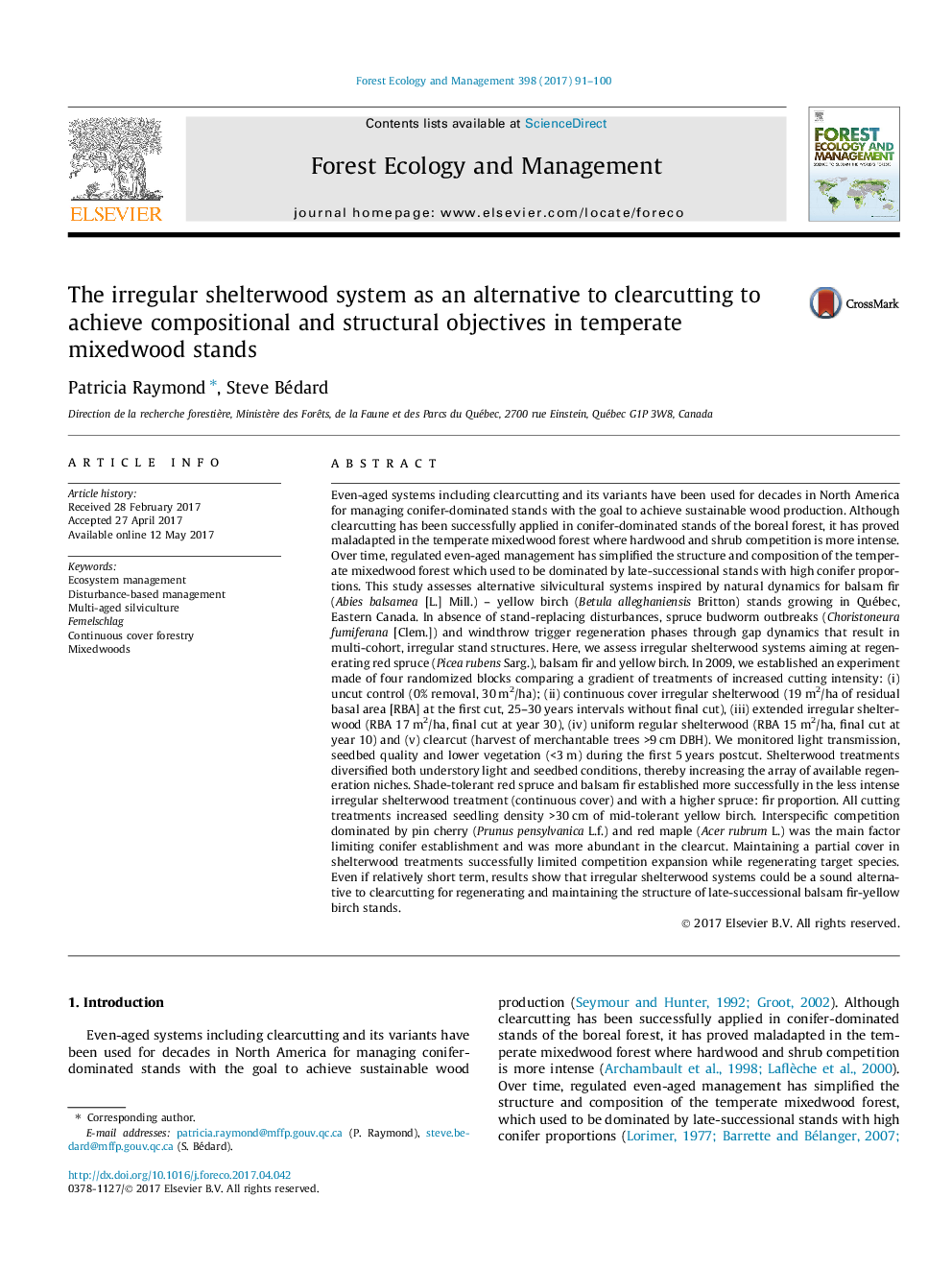| Article ID | Journal | Published Year | Pages | File Type |
|---|---|---|---|---|
| 4759394 | Forest Ecology and Management | 2017 | 10 Pages |
Abstract
Even-aged systems including clearcutting and its variants have been used for decades in North America for managing conifer-dominated stands with the goal to achieve sustainable wood production. Although clearcutting has been successfully applied in conifer-dominated stands of the boreal forest, it has proved maladapted in the temperate mixedwood forest where hardwood and shrub competition is more intense. Over time, regulated even-aged management has simplified the structure and composition of the temperate mixedwood forest which used to be dominated by late-successional stands with high conifer proportions. This study assesses alternative silvicultural systems inspired by natural dynamics for balsam fir (Abies balsamea [L.] Mill.) - yellow birch (Betula alleghaniensis Britton) stands growing in Québec, Eastern Canada. In absence of stand-replacing disturbances, spruce budworm outbreaks (Choristoneura fumiferana [Clem.]) and windthrow trigger regeneration phases through gap dynamics that result in multi-cohort, irregular stand structures. Here, we assess irregular shelterwood systems aiming at regenerating red spruce (Picea rubens Sarg.), balsam fir and yellow birch. In 2009, we established an experiment made of four randomized blocks comparing a gradient of treatments of increased cutting intensity: (i) uncut control (0% removal, 30 m2/ha); (ii) continuous cover irregular shelterwood (19 m2/ha of residual basal area [RBA] at the first cut, 25-30 years intervals without final cut), (iii) extended irregular shelterwood (RBA 17 m2/ha, final cut at year 30), (iv) uniform regular shelterwood (RBA 15 m2/ha, final cut at year 10) and (v) clearcut (harvest of merchantable trees >9 cm DBH). We monitored light transmission, seedbed quality and lower vegetation (<3 m) during the first 5 years postcut. Shelterwood treatments diversified both understory light and seedbed conditions, thereby increasing the array of available regeneration niches. Shade-tolerant red spruce and balsam fir established more successfully in the less intense irregular shelterwood treatment (continuous cover) and with a higher spruce: fir proportion. All cutting treatments increased seedling density >30 cm of mid-tolerant yellow birch. Interspecific competition dominated by pin cherry (Prunus pensylvanica L.f.) and red maple (Acer rubrum L.) was the main factor limiting conifer establishment and was more abundant in the clearcut. Maintaining a partial cover in shelterwood treatments successfully limited competition expansion while regenerating target species. Even if relatively short term, results show that irregular shelterwood systems could be a sound alternative to clearcutting for regenerating and maintaining the structure of late-successional balsam fir-yellow birch stands.
Related Topics
Life Sciences
Agricultural and Biological Sciences
Ecology, Evolution, Behavior and Systematics
Authors
Patricia Raymond, Steve Bédard,
